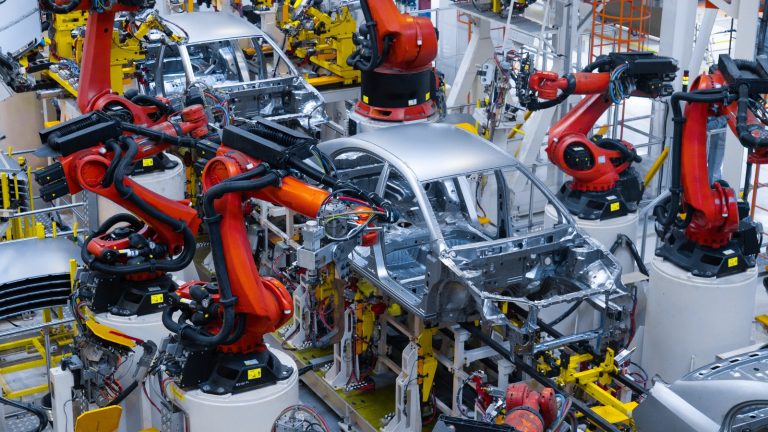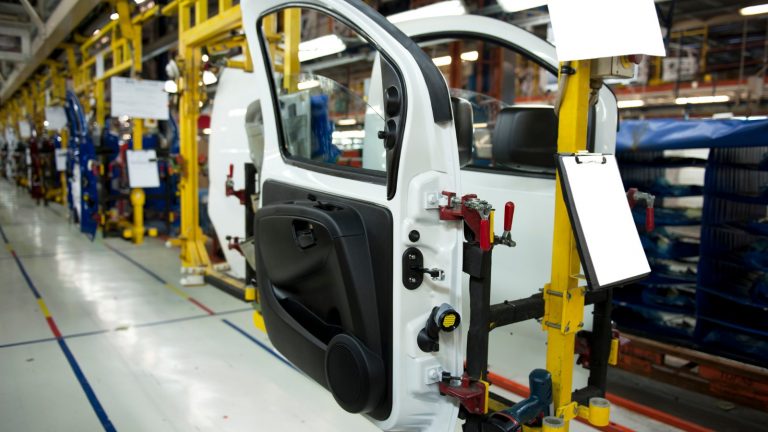Are you stuck between a heavy load of vehicle parts on one side and other equipment for reconditioning on the other side of your warehouse? If you do not have a proper order inside your automotive factory and its warehouse, then you will face many challenges when managing your whole business, as it will not give you real-time updates. This is where the necessity for robust technology comes in, and in order to fulfil the warehouse requirements, a ‘Warehouse Management System’ enters the Singaporean automotive industry with its sophisticated functionalities.
In this article, we will explore the employment of a ‘Warehouse Management System’ and its mechanism for the automotive industry in Singapore.
What is a Warehouse Management System?

- A Warehouse Management System, or WMS, is a software solution that is especially designed to optimise and streamline warehouse operations. As you know, in this sector, there are many warehouse requirements, including inventory management, order fulfilment, logistics processes, etc. These are aspects that need to be unified under one platform, and that is exactly what WMS does.
- Do you wonder how? WMS serves as the centralised canopy for managing all aspects of warehouse activities, from receiving and storing goods to picking, packing, and shipping orders.
- If we look into its functionality more analytically, a WMS integrates various functionalities, such as barcode scanning, inventory tracking, and real-time data updates, to enhance operational efficiency and accuracy with the help of other technologies such as RFID, Sensors, CCTV, etc.
- At first, the system gathers all the relevant data that is streamed through various software and consolidates it under one dashboard. Then, the WMS analyses these data via robust automation and advanced algorithms and encourages automotive manufacturing organisations to optimise inventory levels, reduce storage costs, and drastically improve order fulfilment speed compared to manual work.
- When it comes to the automotive industry in Singapore, warehouse management faces numerous challenges. Maintaining accurate inventory records and preventing stockouts while avoiding overstocking are some of them. On the other hand, scheduling and optimising workforce productivity, streamlining processes, reducing errors, and maximising throughput are truly tough.
- This is why you need WMS, as it provides visibility into warehouse operations, allowing managers to monitor inventory levels, track order statuses, and analyse performance metrics. The visibility this system offers is just unparalleled, as it ultimately leads to business growth through a high-speed runaway.
Benefits of a Warehouse Management System for the Automotive Industry

Inventory Optimisation
This system heavily contributes to inventory optimisation through a combination of advanced features and functionalities.
How exactly does this occur? Since this system is powered by various new technologies, WMS can provide accurate real-time tracking of stock levels while allowing automotive businesses to maintain optimal inventory levels. Since it is able to precisely monitor inventory movements, including receiving, picking, and shipping, WMS helps identify and eliminate inefficiencies in warehouse operations that could lead to excess inventory accumulation.
On the other hand, it is empowered to offer you some advanced features such as demand forecasting and historical data analysis as well. Walking on the prediction path with such abilities, WMS assists in predicting customer demand trends, ensuring that inventory levels align closely with actual requirements.
When it comes to the automotive industry, WMS software optimises inventory via its capacity to reduce excess inventory and prevent stockouts. Since you know how many automobile parts you will need for this particular season, you can prepare yourself with the necessary number of such equipment in advance instead of bulking up your warehouse or facing vehicle parts shortages.
Increased Efficiency
The latter is the best path for your automotive business if you are seeking new ways to enhance efficiency by optimising and streamlining key warehouse operations.
It goes without saying that WMS achieves this by implementing advanced algorithms and automation features that prioritise and optimise the flow of goods throughout the warehouse. From picking to shipping, it unifies all the sub-elements of the warehouse chores and expedites the sales cycle in the end.
For instance, it can organise inventory based on factors like popularity, proximity to shipping areas, and order frequency. WMS minimises travel time for warehouse workers during the picking process, which leads to increased productivity.
Another fact is that WMS encourages efficient packing and shipping processes by providing real-time data updates, barcode scanning capabilities, and automated label printing, reducing the time and labour required to prepare orders for shipment. This systematically unified warehouse strategy helps reduce inefficiencies and bottlenecks in these critical operational areas.
WMS ultimately enhances overall throughput and productivity within the warehouse through this sophisticated automation power. This capacity allows automotive businesses to fulfil customer orders more quickly and accurately while minimising operational costs.
Enhanced Accuracy
How can a WMS boost the accuracy levels within an automotive warehouse? It enhances accuracy in order fulfilment and inventory management through the implementation of barcode scanning and real-time data updates. You know that WMS easily couples with advanced subordinate technologies such as barcode scanning technology and sensors to track and identify inventory items precisely at various stages of the warehouse process.
As it can scan barcodes during receiving, picking, packing, and shipping, WMS ensures that the correct items are selected and accurately processed for customer orders. This capacity helps the automotive businesses in Singapore minimise picking errors and order inaccuracies.
Plus, real-time data updates lower the possibility of stockouts and overselling by giving warehouse workers rapid access to inventory levels and order statuses. WMS strengthens overall accuracy in managing stock and order fulfilment by methodically decreasing errors and inconsistencies in these crucial operational areas. This eventually results in higher customer satisfaction, fewer returns, and enhanced warehouse operating efficiency.
Let us elaborate on this more deeply. In automotive manufacturing, bar code scanning, RFID tags, and sensors collaborate within a WMS system to ensure information accuracy. Bar code scanning captures data at various stages of production, providing real-time updates on inventory movements.
This is enhanced with RFID tags and sensors, which provide accurate tracking of specific parts and assets during the production process. When combined, these technologies ensure precise information management in automobile manufacturing processes by supporting smooth data integration, reducing mistakes, and improving visibility.
Better Supply Chain Visibility
When it comes to any business, the supply chain is the most crucial stage in the manufacturing process. If you can handle the supply chain properly and in an orderly manner, then most of your issues will go away easily.
In this case, WMS plays a crucial role in enhancing supply chain visibility by providing comprehensive and real-time insights into everything from inventory movements and order statuses to warehouse operations, etc.
The latter can conveniently integrate with other supply chain systems, such as Enterprise Resource Planning (ERP) and Transportation Management Systems (TMS), to synchronise data and facilitate seamless communication across the entire supply chain network. WMS helps stakeholders keep a close eye on supply chain operations and identify blockages or delays by tracking inventory levels, incoming and outgoing shipments, and order processing activities in real time.
Furthermore, WMS produces comprehensive statistics and analytics on key performance metrics, such as order fulfilment rates and inventory turnover, helping companies simplify their supply chain operations and make data-driven choices that will increase productivity and customer satisfaction.
The supply chain points of an automotive business usually include suppliers of raw materials, component manufacturers, assembly plants, distribution centres, dealerships, and end customers. This chain brings together all the aspects, such as procurement, production, distribution, and sales processes, involved when bringing vehicles and automotive parts to market.
Cost Reduction
WMS is the final destination due to its cost-reduction capabilities in the automotive supply chain through various analytical optimisations. WMS minimises carrying costs associated with excess inventory storage while mitigating the risk of stockouts and reducing inventory holding costs.
WMS does this logically by putting sophisticated stock management strategies into practice, such as automatic restocking and demand forecasting, to make sure that ideal stock levels align closely with demand trends.
Moreover, it improves operational efficiency through streamlined warehouse processes, and WMS reduces labour costs and minimises fulfilment errors that can lead to costly returns or rework.
If your automotive company can save from these inaccuracies when manufacturing and distributing vehicles, you could easily save a lot of money that you will have to spend on such errors. Also, you can stay away from manual work, which means you are powered by robust automation, which leads to fewer human errors in storing vehicles or vehicle parts.
Optimised Vendor Management
This helps offer comprehensive tools and analytics to track supplier performance, monitor deliveries, and manage vendor relationships all under one technological canopy. WMS can systematically collect and analyse data related to supplier performance metrics, such as on-time delivery rates, quality of goods received, and adherence to contractual terms, through its advanced algorithms and ML capabilities.
In the second stage, the system gets into monitoring mode to inspect these key indicators in real time. This means WMS assists businesses in identifying underperforming suppliers promptly and taking corrective actions to mitigate risks and maintain operational efficiency.
Another outstanding feature of the latter is that WMS provides the grandstand with seamless communication and collaboration with vendors by providing a centralised platform for exchanging information, managing purchase orders, and resolving issues efficiently.
This leads to developing transparency and accountability in vendor relationships. WMS helps optimise supply chain processes and reduce costs.
Walking towards Proper Warehouse Management with New Tech

It is not a problem for complex industries like automotive to manage their warehouses via advanced technologies such as Warehouse Management Systems. However, you need to hold hands with a reputed software provider when purchasing these tools. With the right tools, your journey is just unstoppable!






